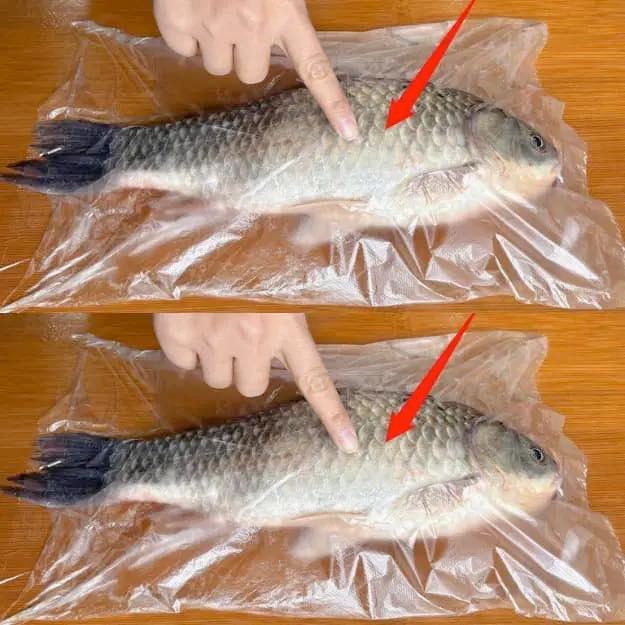ADVERTISEMENT
# **How to Remove Fish Scales Using Just a Plastic Bag: The Easiest Method You’ll Ever Learn**
Fish are a staple in many cuisines worldwide. Whether it’s for a fresh seafood dish, a fish stew, or grilling a flavorful fillet, fish is an excellent source of protein and healthy fats. However, one of the most tedious tasks when preparing fish at home is removing the scales. Fish scales can be stubborn, clingy, and can make an otherwise enjoyable task feel like a chore.
Removing fish scales is often considered a tricky and time-consuming task that involves a specialized tool like a fish scaler or a knife. But what if we told you that you could easily remove the scales using something as simple as a **plastic bag**? This method is not only easy, but it also helps keep the kitchen clean, minimizes mess, and allows for a more comfortable fish scaling experience.
In this article, we will walk you through the **step-by-step process of removing fish scales using only a plastic bag**, discuss why this method works so well, and offer some additional tips and tricks to make your fish preparation easier and more efficient.
## **Why Should You Remove Fish Scales?**
Before we dive into the how-to, let’s briefly discuss why removing fish scales is important:
1. **Texture and Presentation:** Scales are inedible and can affect the texture of your dish. They can be unpleasant to bite into and may ruin the smooth texture of the fish’s flesh. Removing the scales ensures that your dish is pleasant and enjoyable to eat.
2. **Cleanliness:** Fish scales can easily fly everywhere when you’re trying to remove them with a knife or scaler. The fish scaler method often creates a mess on your counter, sink, and floor, making cleaning up afterward a hassle. Using a plastic bag helps you keep the scales contained.
3. **Cooking Consistency:** Fish scales can alter the cooking process. If you’re grilling or pan-frying the fish, the scales may create an uneven cook, or they might burn, leading to an unpleasant taste. Removing them ensures that your fish is cooked evenly.
4. **Health and Safety:** Sometimes, scales can carry bacteria or chemicals from the fish’s environment. Removing them ensures that your fish is not only cleaner but also safer for consumption.
## **What You Need:**
The good news is that you don’t need fancy tools or equipment to remove the scales. All you need is a plastic bag and a few simple kitchen items. Here’s what you’ll need:
1. **A plastic bag (preferably large enough to fit the fish)** – A regular grocery store plastic bag works perfectly for this method.
2. **A fish (whole and unscaled)**
3. **A pair of kitchen scissors or shears (optional)**
4. **A fish knife (optional)** – This can be useful to remove any particularly stubborn scales or when scaling the tail.
5. **A clean cutting board** – To work on, although this method is relatively mess-free.
6. **Running water or a container of water (optional)** – For rinsing the fish after scaling.
## **Why a Plastic Bag?**
You might be wondering why a plastic bag is the key to the entire process. The plastic bag method works so effectively because it helps **contain the fish scales** in one place, reducing the mess. When you scale a fish in the traditional manner, scales tend to fly everywhere—across counters, the floor, and your sink. With a plastic bag, the bag collects all of the scales as you scrape them off, keeping your kitchen cleaner.
Additionally, the plastic bag provides a **non-slip surface** that helps to better grip the fish while scaling. This makes the process easier and more efficient, especially for those who find fish scaling to be a tricky task.
For Complete Cooking STEPS Please Head On Over To Next Page Or Open button (>) and don’t forget to SHARE with your Facebook friends
